As the ferry approaches Rothesay harbour, passengers are greeted by signs of Bute’s struggles – and successes. Lined up behind the town’s palm tree-filled Victorian promenade, once-grand derelict hotels and boarded up shops neighbour vibrant, independent businesses.
Older islanders reminisce about Rothesay’s time as a bustling seaside resort town and popular tourist destination in the 1950s. Multiple steamers, they recall, would vie for space at the port to let off the next batch of tens of thousands of summer tourists, who would help to sustain swathes of jobs and businesses.
While it has less of a tourist draw today, the many appeals of the Firth of Clyde isle remain. Vast stretches of coastline, rolling hills, lush woodland and heather-clad moorland trail off in all directions from the port, and the island is steeped in history.
In the centre of Rothesay, the castle ruins watch over the town. Since its 12th century origins, the stronghold has withstood many battles, from viking raids, to the wars of independence. But the modern day battle in Bute is one against depopulation.
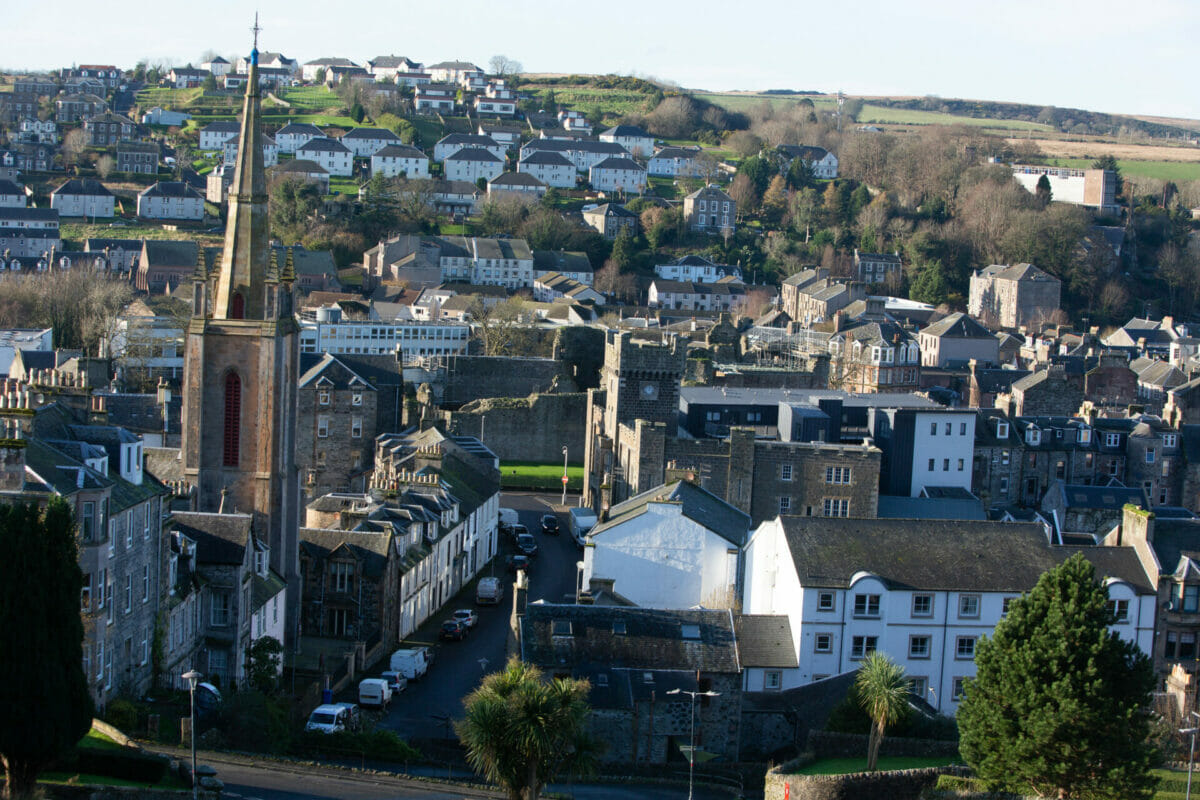
According to Scottish Parliament Information Centre (SPICe) data, nearly one in five people left Bute between 2001 and 2020 – the largest exodus of any island ‘data zone’.
Some are confident that a post-Covid population influx is reversing Bute’s depopulation trend, and say a surge in Bute’s independent food, drink and arts businesses represents a change of fortunes.
Others fear that a lack of affordable housing, well paid jobs and higher education opportunities mean Bute will increasingly struggle to retain – and attract – young people.
Island depopulation: a Scotland-wide issue
But it is not just Bute residents who are concerned about depopulation. The National Records of Scotland forecasts population reductions for all islands over the next 20 years. Over the last decade, almost twice as many islands in Scotland experienced population loss than growth.
Depopulation is caused when more people leave than move or return to a place, and when the number of deaths outstrips births. In their responses to a Scottish Government consultation, islanders across the country said depopulation was the biggest issue they faced.
Influencing factors reported included access to agricultural land, healthcare, good internet and infrastructure, employment, training, schools, care, reliable public transport, higher education, childcare, affordable housing and fuel.
Meanwhile, between 2001 and 2020, the proportion of islanders in Scotland aged 65 and over rose from 18 per cent to 26 per cent, while the proportion of those under 25 fell from 28 per cent to 24 per cent. Today, the majority of Scotland’s islanders are, according to SPICe analysis of National Records of Scotland data, all over 45 years old.

For islanders, sustaining populations – and attracting and retaining young and working age people – is not just favourable, but essential. For a community to function, there must be enough people to fill societal roles – as well to provide general support and friendship.
The Scottish Government previously announced a £50,000 grant to attract incomers to islands. However, it was scrapped because islanders felt it did not tackle the root causes of depopulation.
The government said the sustainability of island communities is “vitally important” and last year announced an “addressing depopulation action plan” with an aim to publish it in 2023. While there is “no quick fix” to depopulation, the government is working with regional, local and community partners to collectively deliver solutions, a spokesperson told us.
When we visited the island in November, Bute residents said jobs and housing were the two most crucial factors that influence population.
Bute’s housing shortage
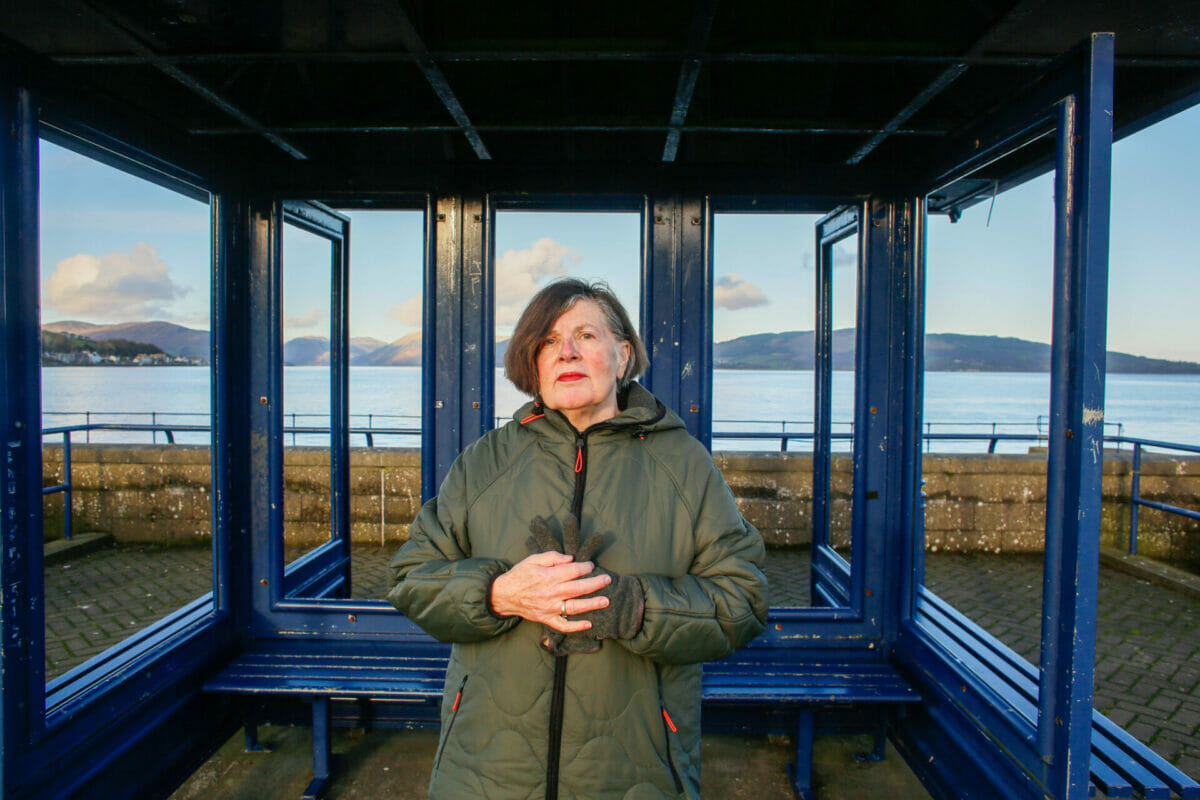
But despite NRS figures pointing towards depopulation, locals have witnessed the opposite trend since the pandemic. Jean Moffat, the chair of Bute Community Council, says that pre-Covid, it could take up to five years to sell a property.
But today, she explains, “we don’t have enough homes for people living on the island, nevermind for those who want to come in.”
Urbanites realised that “for the money that you will get for a city centre apartment, you can buy a house with a garden, fresh air, sea views – you name it,” she says. “At one stage there was nothing available in Bute property… just incredible.”
In a quiet corner of Rothesay’s library, David Heriot tells us how demand for property in Bute “comes in waves”, occurring around once a decade.
The Fyne Homes housing association board member, who was a chartered surveyor in Argyll and Bute for 35 years, attributes the fluctuations to “economic activity down south”.
“You’re slow to get the upturn but quite quick to get the downturn,” he says. Rothesay’s tenements – many of which are lined up along the waterfront – are too small for families and the island’s relatively small population means that big housebuilders see no opportunity for new developments.
“We’ve got a bit of difficulty in the middle of the market,” adds Heriot, with most homes too expensive for local salaries. “It becomes a problem for people who are ‘truly local’ you might say.”

The council insists that it is already tackling Bute’s reported housing shortage. It has “invested millions” in building and refurbishing properties alongside partners including housing associations, with “substantial plans” for new homes.
Nationally, the Scottish Government promises that at least 10 per cent of the 110,000 affordable homes it aims to deliver by 2032 will be in “remote, rural and island communities”. A spokesperson says an “action plan” to support housing efforts in such communities is underway.
Bute residents told The Ferret that areas with many holiday homes can become ghost towns for large parts of the year.
SPICe research found that, as of September 2021, just one per cent of Scotland’s homes were second homes. However, six per cent of the homes in Argyll and Bute and the Western Isles were second homes – the highest proportions of all local authority areas – followed by four per cent in Orkney.
High concentrations of second homes can increase house prices, reduce housing supply and impact community cohesion, it found. The issue has led to calls for Scotland to adopt Norwegian-style laws which stop first homes being turned into second homes to protect housing stock.
Bute’s jobs decline
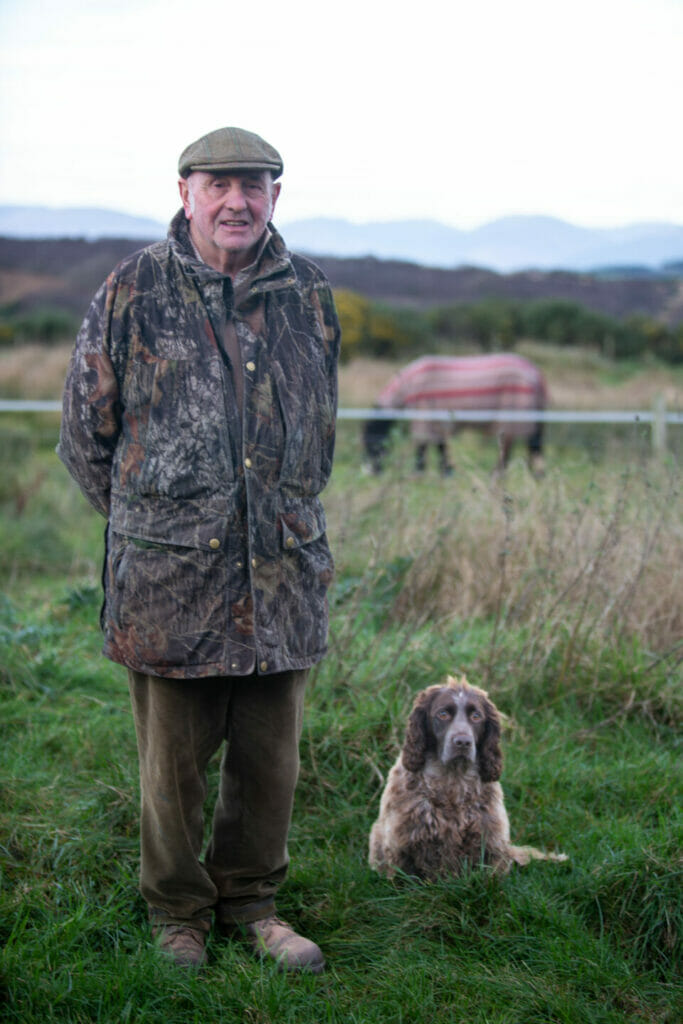
Up on Bute’s moorland, Ian Sinclair is preparing to bring his horses in for the night. As the sun dips behind the hills, he calls for his animals, tells us to stand back, and opens the gate to their field. The horses trot to their stables and happily eat their food.
In Sinclair’s living room, the lifelong islander stokes his fire as he considers the drop in Bute’s population – something he feels has been fuelled by a shortage of jobs.
“You look back and see photos of Rothesay pier jam packed with people,” he says. “I can remember that – all the activities they had for folk”. Some 14 shops once existed in Kilchattan Bay alone, Sinclair says. He recalls a friend on his deathbed telling him “I didn’t think the village would die before I did.”

Just days before we arrived in Bute, circuit board manufacturer FlexiTech folded after 30 years, leaving 31 locals jobless. Almost everybody we speak to laments the loss of these well paid, skilled jobs, and worry the closure will fuel depopulation.
Sinclair has noticed the decline of the local fishing fleet, boatyards and farming – the shrinking number of farms were followed by the loss of the creamery, abattoir and several butchers.
“I think farming on Bute is in a worrying state,” he says. Farmers, he explains, often lack “successive heirs” while the increased costs make the trade less viable – an issue that has left derelict farms dotted around the island.

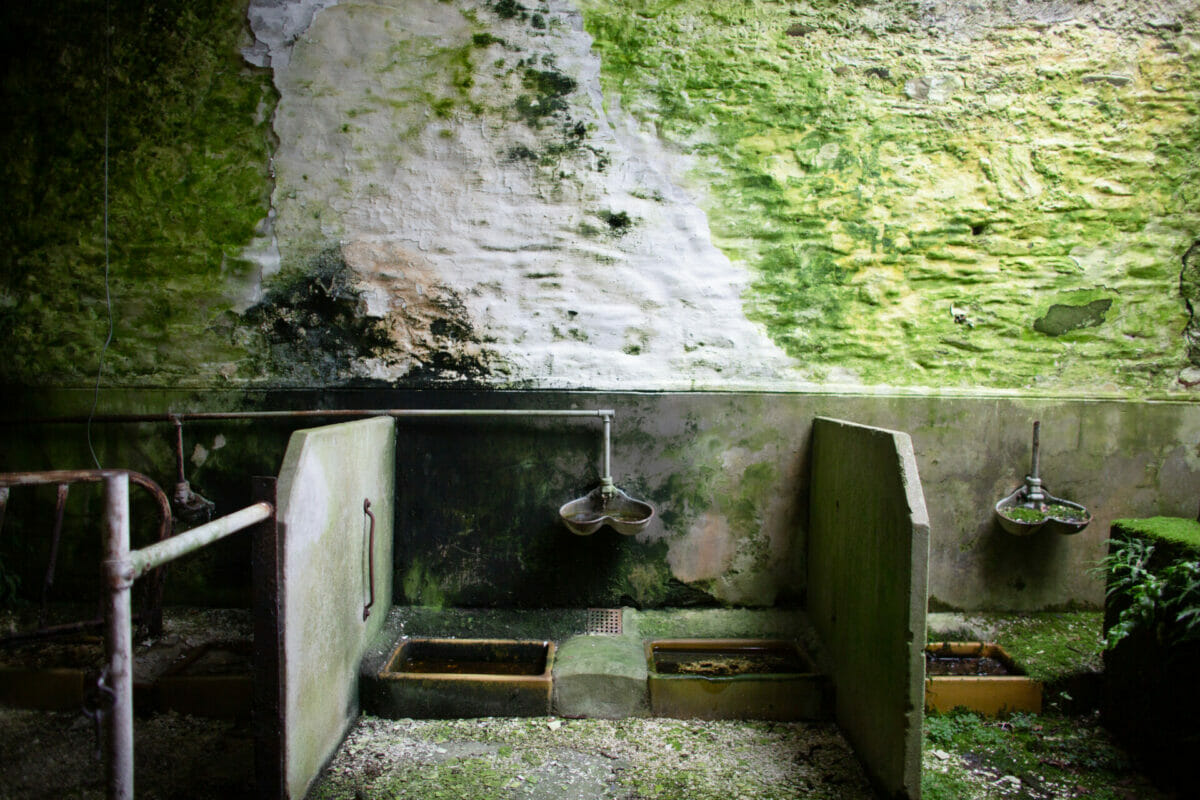

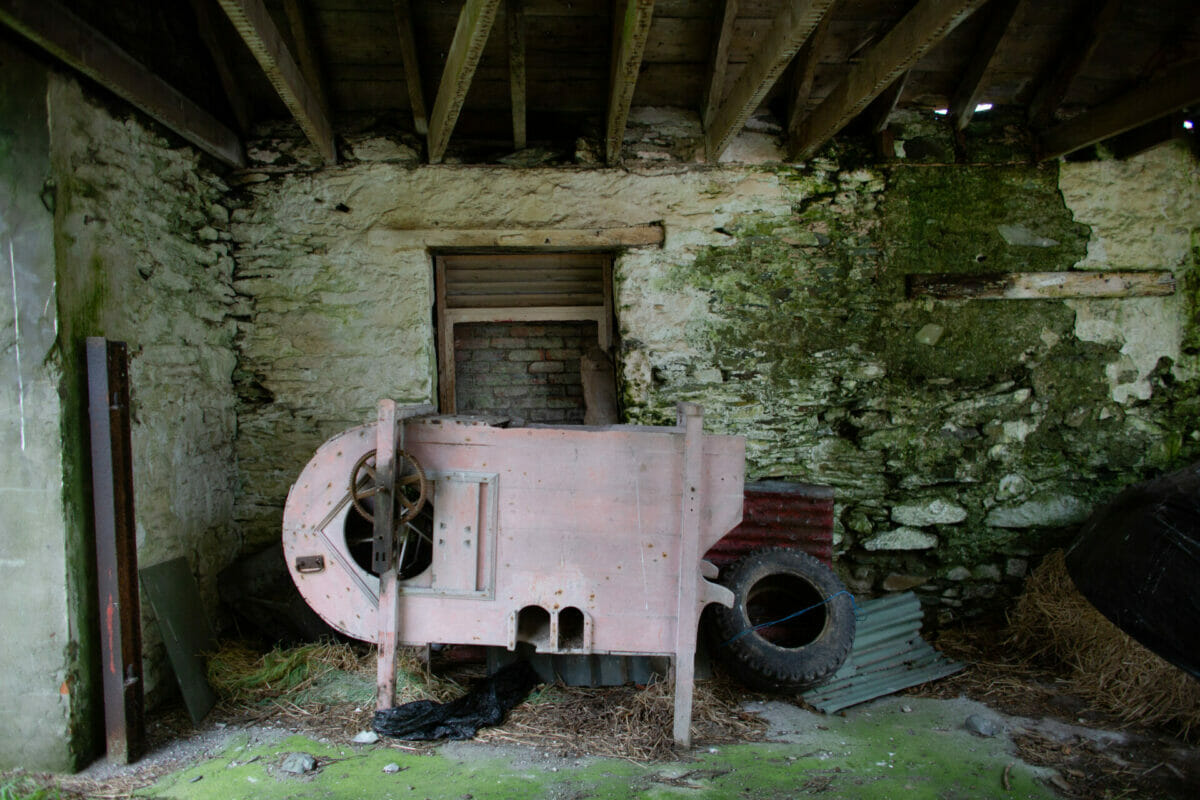
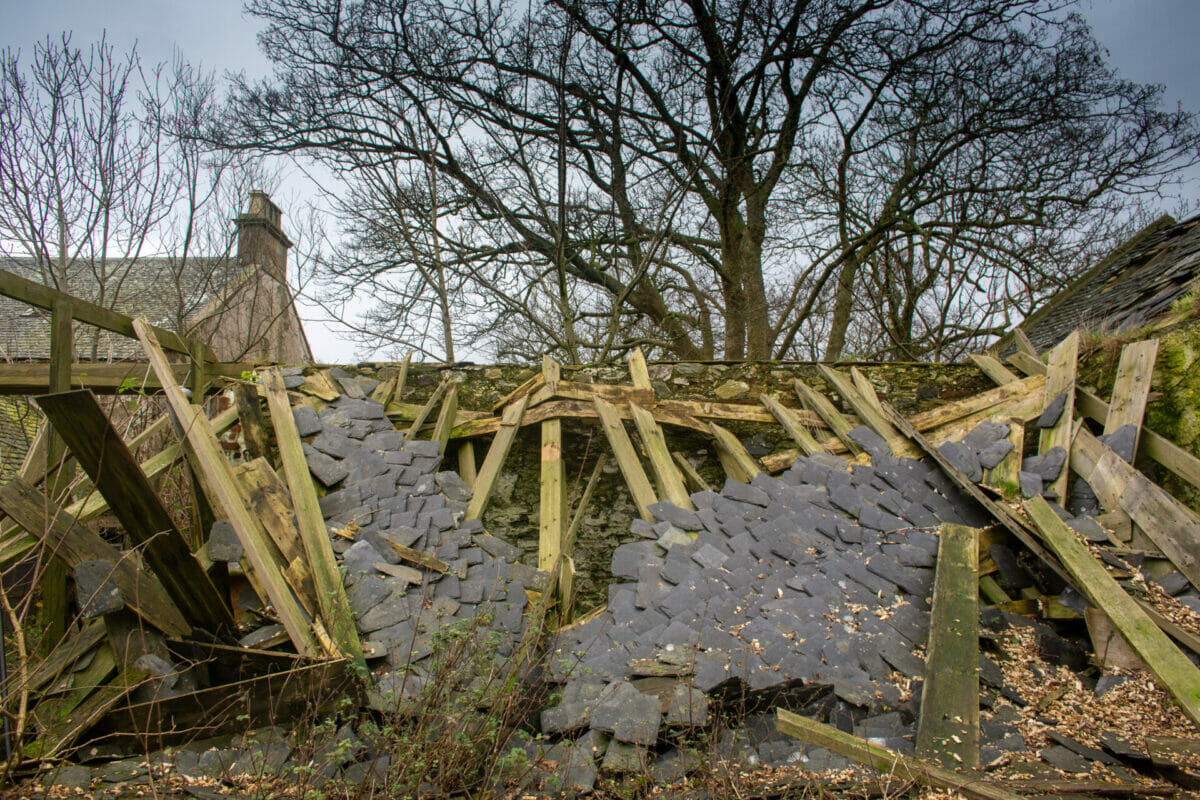
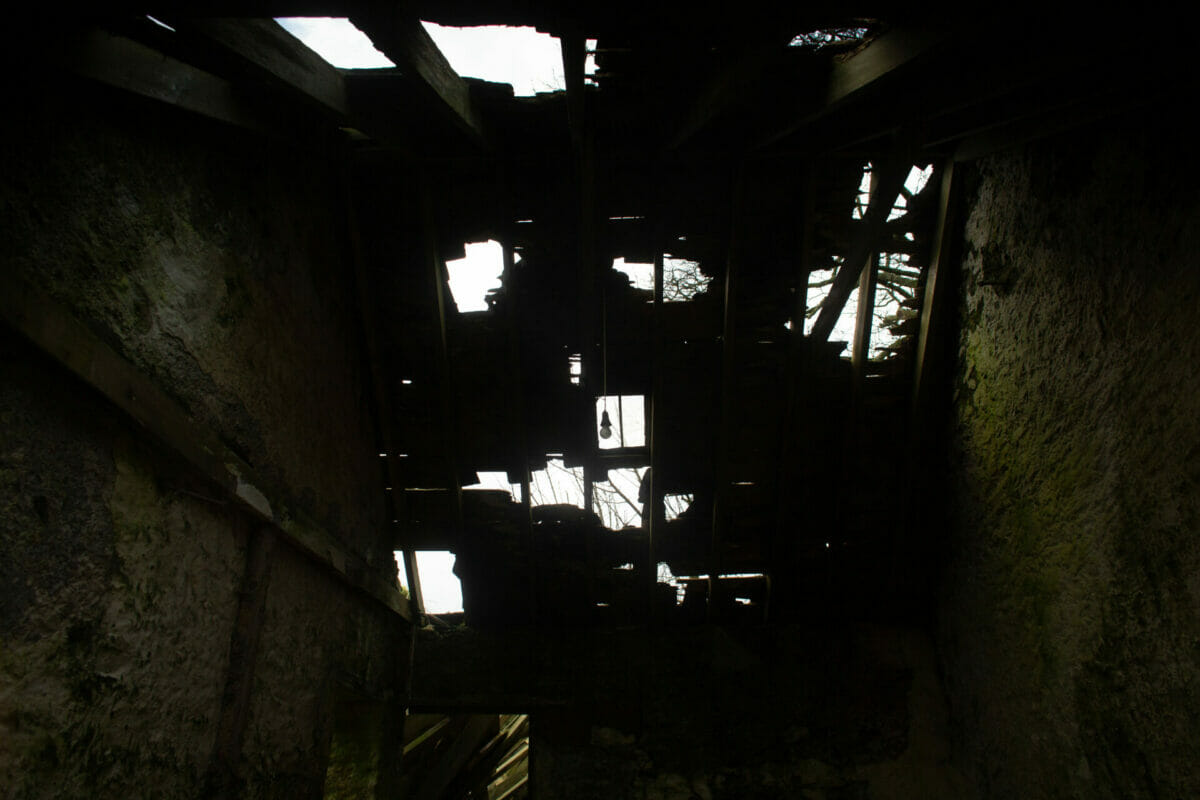
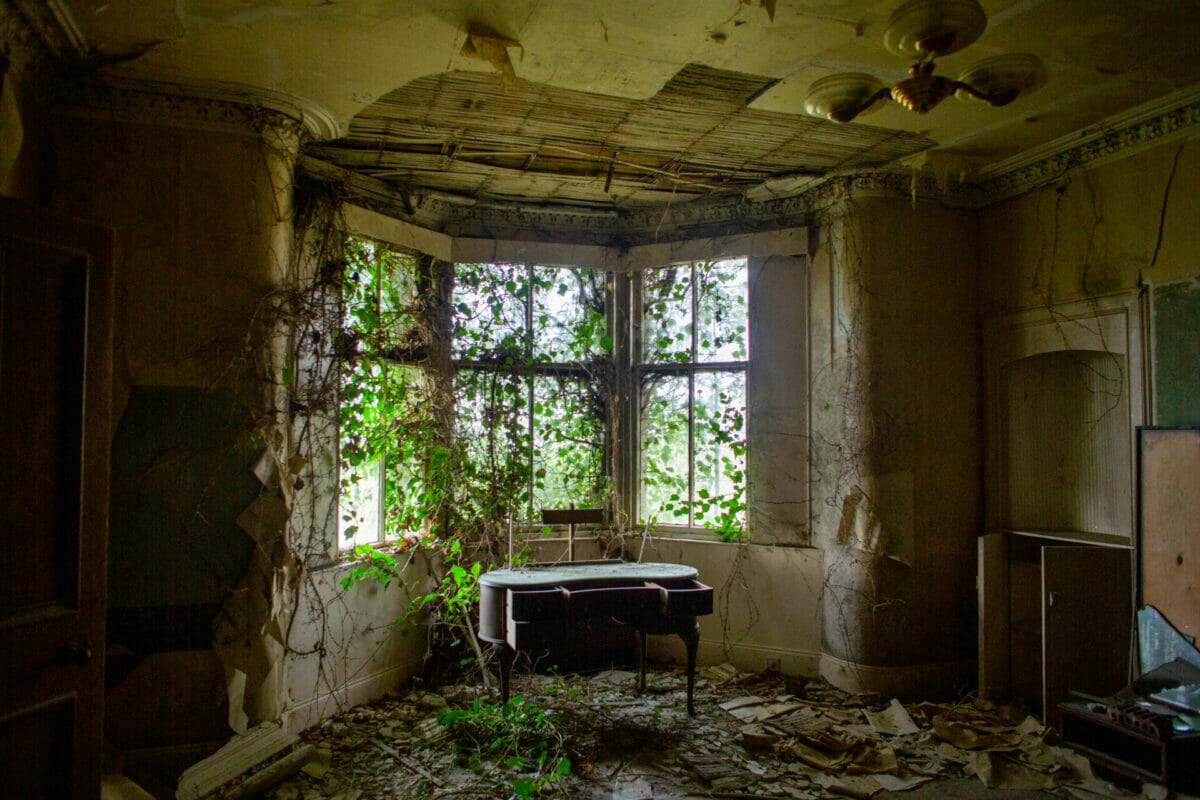
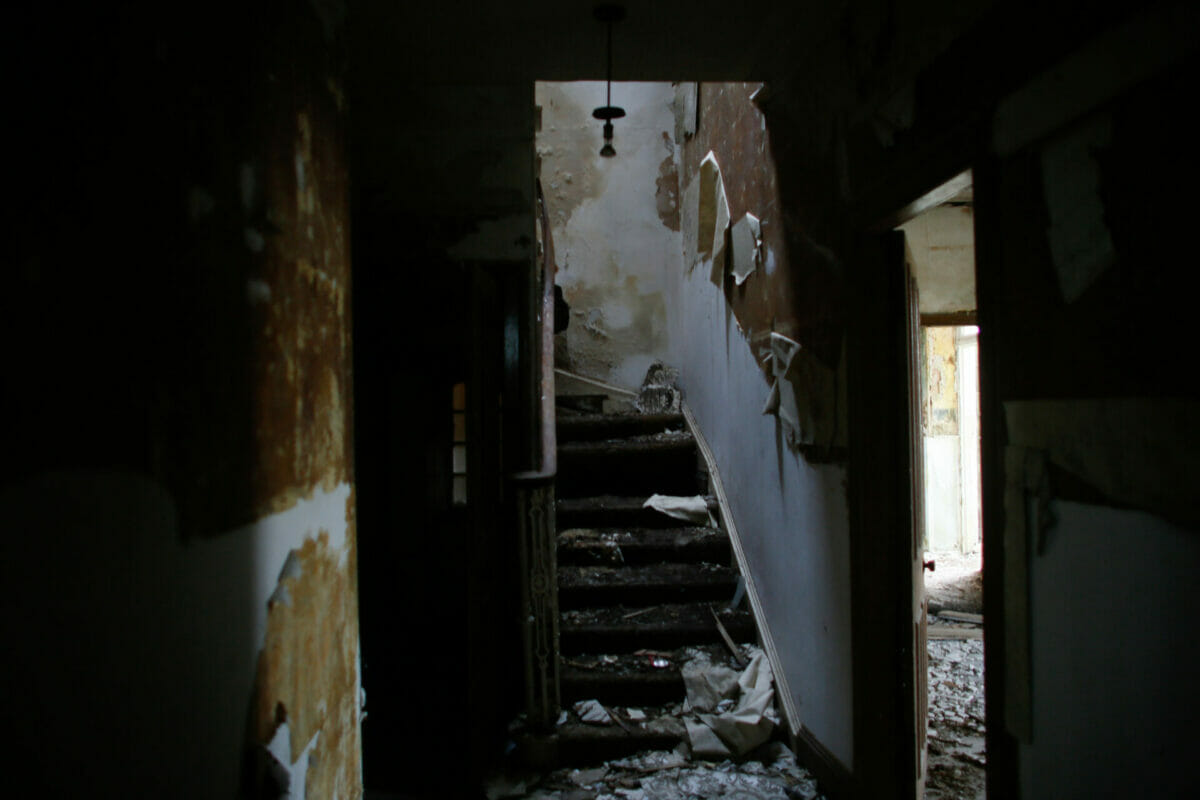

But Sinclair is heartened by the young farmers moving to the island, who give him hope for the next generation of farming on Bute.
He is also encouraged by the successes of companies like Bute Blacksmiths and Bute Fabrics – thriving fabrication and textile businesses with international customers.
The former council worker partly blames the consolidation of local government for the decline of the island’s employment prospects.
Rothesay Burgh was “a thriving body that employed all sorts of men that did all sorts of jobs”, finances were levied and collected locally and “the island functioned and functioned well,” he claims. However, “slowly things got pushed away to Argyll” when the modern council formed.

Sinclair hopes to see more thriving businesses on the island and a growing working age population. “It depends what people want of Bute,” he says. “Do they want it as a retirement community? It would be nice to see it increasing, employment going up”.
Dr Malcolm Alexander, a retired Rothesay GP and long-term islander, says Rothesay now feels like a “neglected seaside town”. The typical inner health and mental problems he treated as a GP, such as addiction issues, were more akin to an inner city than that of an island, he says.
According to the Scottish Index of Multiple Deprivation 2020, all but one of Rothesay’s seven data zones are in the top 30 per cent of Scotland’s most deprived areas – two are in the top 10 per cent.
There is also a jobs issue on Bute, Alexander says. Many of his six children would love to live on the island, but would have to abandon their industries, which do not exist on Bute.
The island lacks higher education opportunities and the well-paid jobs needed to live comfortably and afford a home, which makes attracting and retaining young people difficult, he believes.
Younger people are moving – and returning – says Alexander, but mostly those with higher wage jobs that allow home working. “These people weren’t here five years ago,” he adds. “So there is something changing”.
While Alexander feels it is up to islanders to come up with initiatives to revive the island’s economic fortunes and attract tourism, the local authority has failed to promote the island and even stopped cutting the grass on the shoreline years ago in years past, he says.
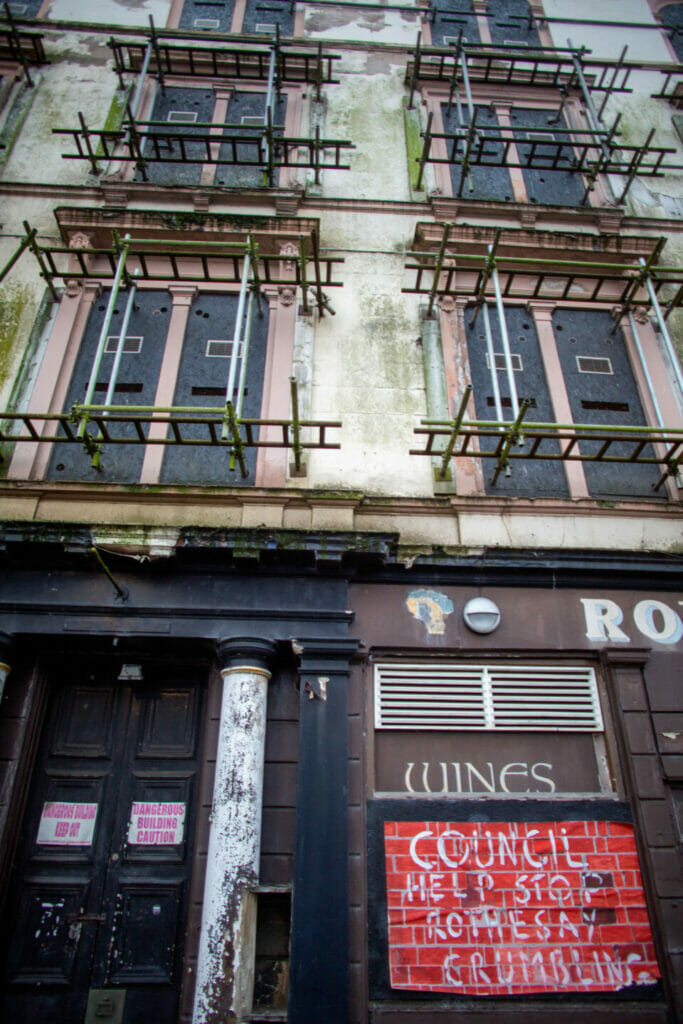
As we walk along the waterfront’s Albert Place, we spot a plea to the local authority beneath the dilapidated Royal Hotel. Someone has graffitied “Council help stop Rothesay crumbling” on an empty shop window.
Just up the road, the iconic Rothesay Pavilion – a historic entertainment venue – remains closed more than seven years after it was shut for a £15m refurb. It was stalled by the collapse of the building firm that took on the project.
In November, Argyll and Bute Council said that as part of its five-year plan, it would work with the Rothesay Pavilion Charity Trust to lobby for funding to complete the refurbishment.

The council told The Ferret it had “invested extensively in Bute” for several decades and had applied for UK Government funding to restore the former Royal Hotel “into key worker housing”, with three “substantial” building regeneration schemes in place. The bid was unsuccessful.
The council, which has a region-wide tourism brand, had also supported Bute companies and the business improvement district, which is “taking over the promotion of the island to visitors,” a spokesperson added.
However, many in Bute’s vibrant artist community and food and drinks industry believe a homegrown groundswell of economic and employment opportunities is underway.
Entrepreneurial surge

From the warmth of her Rothesay coffee and jewellery shop, Mhairi McKenzie is telling us how a post-Covid influx of incomers and business activity could reverse Bute’s depopulation trend.
Like many young islanders, McKenzie left Bute for university and to experience city life. “I’ve always felt a longing to come back to Bute,” she says. But it wasn’t until Covid-19 that, after 20 years in Glasgow, she began feeling “locked in the city” and far from the sea.
The lockdown caused her TV editor husband to go freelance and work from home, giving her family “the opportunity to relocate.” McKenzie not only moved her laser-cut jewellery business, Bonnie Bling, to Bute, but co-founded the Isle of Bute Coffee Company, alongside another Bute native and owner of a Glasgow coffee roastery.
Her Rothesay shop is the derelict former office of The Buteman, a local newspaper which, founded in 1854, closed in 2019. McKenzie had the building renovated and extended and, with a grant from Business Gateway, bought a good coffee machine and grinder.
Her company has its own speciality coffee, trained baristas, and aims to start roasting its own beans. Now targeting international customers via social media, McKenzie has big plans, and says she is not alone

The entrepreneur is a Bute Kitchen representative, which brings together around 50 local organisations to sell the isle as a food and drink destination.
The social enterprise visited Orkney to discover how the archipelago earned its status as a food and drink destination, and how Bute might follow suit. McKenzie believes the “cohesive approach” that led to Orkney’s success is now occurring in Bute, and is leading to more events and investment.
“We’re meeting all sorts of interesting people that I didn’t even know existed on Bute,” she says. “It’s bringing a really nice community together… People are full of ideas.” Bute businesses include a gin distillery, a soon to reopen brewery, a smokehouse and a vegan cheese factory – Bute’s largest employer.

Some companies have been buoyed by the continued custom of locals who relied on them during Covid-19, and by a wave of incomers from as far as the US and Australia, McKenzie tells us. A young family of incomers even took on the local fruit and veg shop when the former owner retired.
“Not everybody wants a fast paced city hustle lifestyle anymore – and that goes for the young people as well,” she says. “The change in people’s lifestyle since covid has brought a fresh insight, a fresh outlook for people who have decided to relocate.”
McKenzie concedes that Bute has been “weary at points”, but now sees “a real buzz and energy about the place” that signals a shift away from depopulation. Previous Bute business initiatives had “happened individually,” adds McKenzie. “But now things have happened all at once, I think it’ll actually hit the tipping point this time and keep going. I really hope this is it – I can feel it turning.”

This story is the first in a series on island depopulation funded by journalismfund.eu – an independent, non-profit organisation in Brussels that supports cross-border investigative journalism. Our investigations were carried out in partnership with Irish journalist, Niall Sargent, and Italian journalist, Giacomo Zandonini.
You can read Sargent and Zandonini’s investigations into island depopulation in Ireland and Italy via Noteworthy and the Investigative Reporting Project Italy.
Update: We originally stated that David Herriot worked as a chartered surveyor for Argyll and Bute council – he in fact worked within the region for clients including the council.
We also stated that Jean Moffat was the former chair of Bute Community Council. She was, as the time of publication, the current chair.
We corrected these two claims at 13:10 on 2 February.








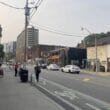

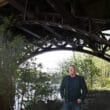




This is a great article. Thanks for writing it. Looking forward to reading the rest of the series. Surprised that there’s no mention of land ownership and its effects on the availability of land for housing, maintenance of farm properties, expansion of business premises, the ability to establish community owned energy production etc etc. I’d be interested to learn why that aspect of life on Bute didn’t feature in your article.
This is very interesting. I visited Bute with my family on Good Friday and was amazed at how quiet it was on a sunny bank holiday. Rothesay did seem a bit down at heel, but the rest of the Island is stunning. I think it would really help to encourage visitors and new residents if it was quicker and less expensive to get to the island. When it’s almost £50 for a return ticket for a family in a car and the ferry is only once an hour it’s going to put people off.
Mount Stuart owns everything, and lets the real people do nothing. There is plenty of land or farmhouses that are wasting away that could provide homesteads or small business jobs to local people. The councils won’t contribute highly to Bute as the Mount Stuart owns it all, please write about this.